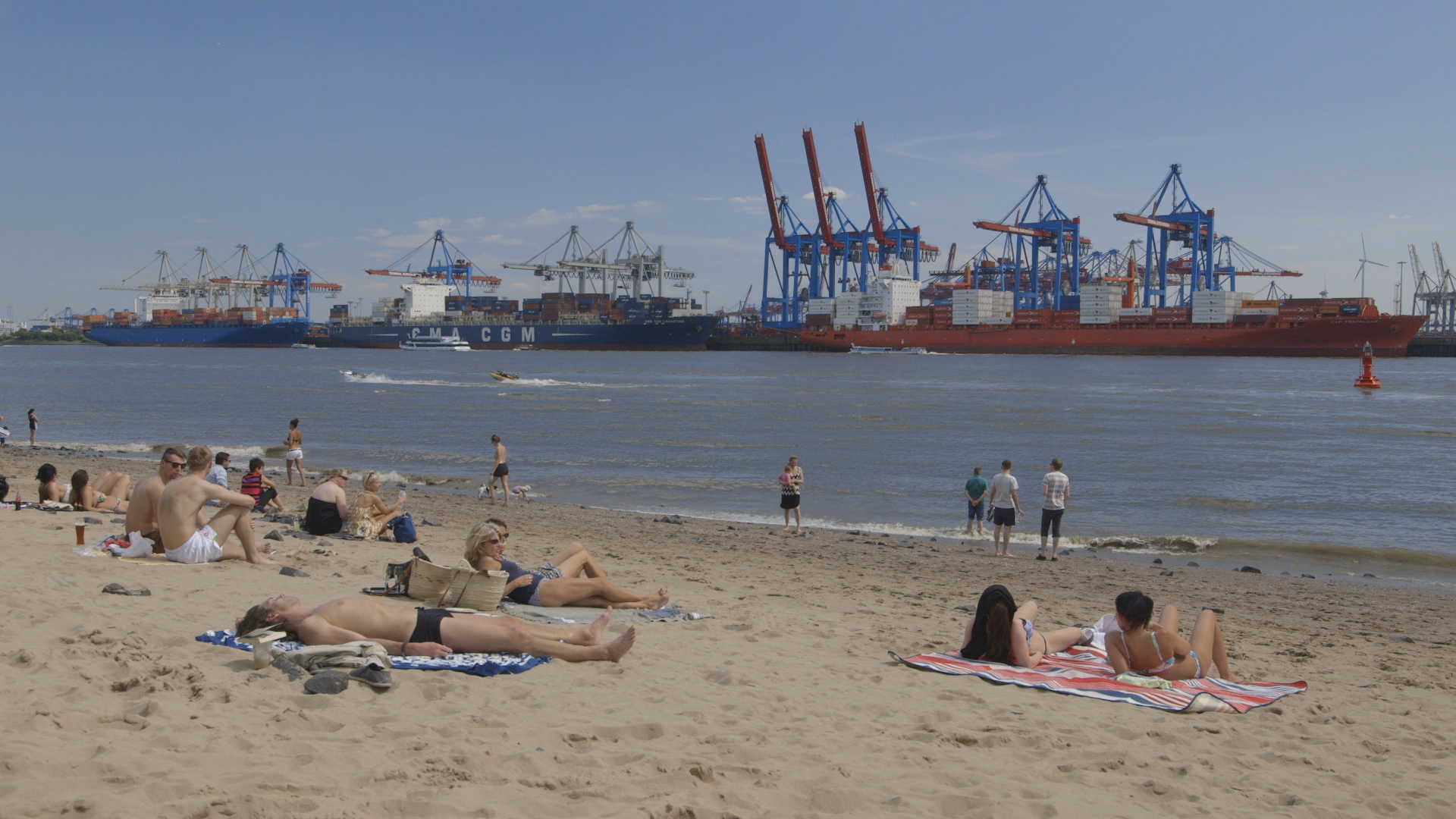Series: Cities by the Sea
Hamburg
A film by Jan Hinrik Drevs
© 2015 / 43 min (dt.) / 52 min (eng.) / HD / 16:9 / Stereo
Water plays an important role in Hamburg. Since medieval times, sea trade has brought the Hanseatic city prosperity, and the river Elbe and Alster lake define the everyday lives of the city's inhabitants. Despite the fact that its harbour lies 100 kilometres inland, Hamburg is one of the world's biggest seaports. It also boasts more bridges than Venice and has its own national park in the middle of the North Sea.
Thanks to its port, Hamburg has always been a cosmopolitan and forward-looking city. Flexibility and adaptability have helped Hamburg evolve from a provincial town to a world city. After local shipping companies were forced out by competition from Asia in the 1940s, banks and insurance companies settled here before the media industry then took over the city. Today, Hamburg is a leading media centre and home to numerous publishers, IT companies and advertising agencies. Many operate from the former warehouses in Hamburg's Speicherstadt, where carpets, coffee and the famous "pepper sacks", which gave the wealthy merchants their nickname, were once stored. Today's Speicherstadt businesses no longer deal in colonial goods; their products are ideas and campaigns which move in seconds around the globe via high-speed fibre optic cables.
In the city's youngest district, the Hafencity, we are introduced to a new trend sport known as "street fishing". Equipped with fishing rods and plastic bait, young men like Daniel Fritz tour Hamburg to fish for bass or pikeperch. Street anglers never stay long in any one place, "making tracks" is their motto. They know the tides and sluice times and own fishing licences. But they still consider themselves rebels because they have turned a middle-class pursuit into a hip new trend.
The district of Hamburg-Mitte stretches into the North Sea, and the island of Neuwerk. People who live here are officially residents of Hamburg, like Svenja Tidau and Stella Klasan, ornithologists at the Wadden See national park. Unfortunately, protecting birds in the national park is not their only task. Container ships heading for the port of Hamburg produce huge quantities of rubbish that are washed up onto the shallow-water beaches. The inhabitants of Neuwerk are faced with the task of dealing with this growing problem. Nature can only tolerate limited quantities.
The film accompanies Susanne von Arciszewski, engineer with aircraft manufacturer Airbus, as she inspects the final corrections that have been made to the interior of an A380. And young biologist Jessica Börstler from the Bernhard-Nocht Institute of Tropical Medicine as she searches for mosquitoes. Container ships and planes carry species that can transmit dangerous diseases.
In the red-light district, nights are spent at Silbersack. Not long ago, singing legend Hans Albers' favourite bar in the heart of St. Pauli was a condemned building that was supposed to make way for new properties. But the regulars couldn't get used to the idea of St. Pauli without Silbersack and spontaneously formed a community of buyers in order to save their favourite Hamburg local. Today, the bar attracts crowds of young people.
Combining the old with the pace of the modern and contemporary, this is as true of the traditional Hamburg bar as it is of the modern container terminals or the Art Nouveau villa on the Alster, where up-and-coming young pop artists prepare for their world careers. This gentle transformation in the economy, culture and everyday life is what makes Hamburg so special and is the focus of this film.

